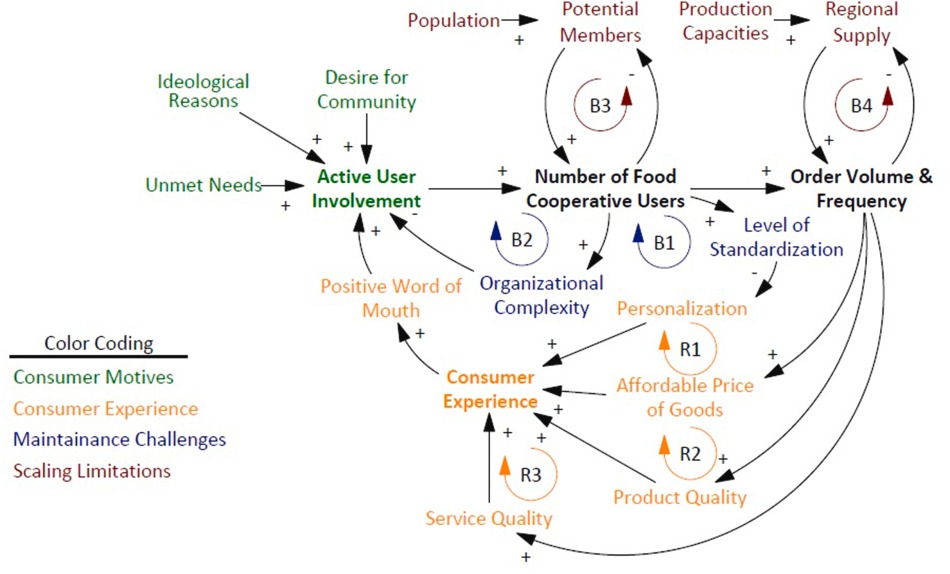In 1972, commissioned by the Club of Rome, ‘The Limits to Growth’ was famously published. Through systems thinking and computer simulations, researchers showed that economic and population growth has limits given the finite availability of resources. Nearly 30 years later, we used a similar approach to see which limiting factors exist in the context of alternative food networks.
Therefore, we combined a literature review with a systems thinking perspective to generate causal loop diagrams. Such diagrams depict feedback loops in complex system in an easy-to-understand manner. The results of the research (available for free here), published in Journal of Cleaner Production together with Barbara Kump, provided various insight on how grassroots innovations in alternative food networks may grow or even diffuse to mainstream. In fact, while there are multiple factors which support the formation and establishment of such grassroots innovations (e.g., unmet needs, desire for community, ideological reasons), at a certain size, multiple limiting factors restrict further growth. Based on the example of food cooperatives, i.e. private food buying groups aiming to purchase food directly from local farmers, we identified the following limiting factors:
- Organizational Complexity: Various research highlights an increasing organizational complexity with a growing number of members. This is quite easy-to-understand as more members mean more effort in both decision-making and management activities.
- Required Level of Standardization: Similarly, the larger the initiative is, the less it can respect individual wishes of single users. This hurts customer experience and potentially further leads to limited growth.
- Logistics Performance: Additionally, a growth of the grassroots initiative may complicate logistics operations substantially. Given the available infrastructure and resources, operations normally work well up to a certain point when delays start to happen and logistics performance decreases. This requires further investments by the farmers to fulfill the requirements set by the initiatives. As this, however, comes with a time lag, it represents a major limiting factor in the system.
- Potential Number of Users and Regional Supply: The final two factors are straightforward. Given the local population size, there is a maximum number of members an initiative can reach. At some points, there are simple no potential new members left. Similarly, regional supply is limited by the production quantity of the respective area.
By analyzing these factors in more detail, one can conclude that grassroots innovations in alternative food networks may diffuse to mainstream rather through replication in different area than through scaling-up. This provides various interesting policy implications such as that one should focus on motivating new initiatives and cross-regional network activities to promote alternative food networks in the future.
Reference:
– [Open Access] Kump, B., Fikar, C (2021). Challenges of maintaining and diffusing grassroots innovations in alternative food networks: A systems thinking approach. Journal of Cleaner Production 317, 128407. https://doi.org/10.1016/j.jclepro.2021.128407
– [Open Access] Meadows, DH, Meadows, DL, Randers, J, Behrens, WW (1972). The Limits to Growth. Link to full text

0 comments on “Limits to Growth: The Case of Alternative Food Networks”